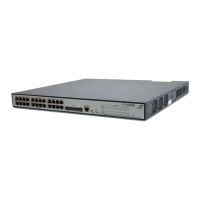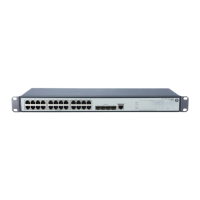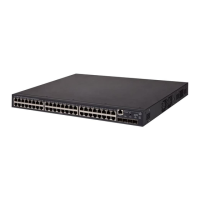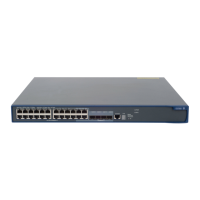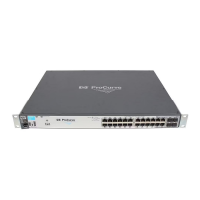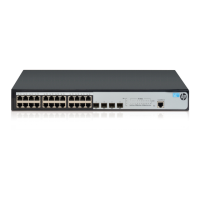Interface Name Displays the name of the port or ports you are configuring.
LLDP State
Displays the LLDP enabling status on the port you are
configuring.
This field is not available when you batch-configure ports.
Basic Settings
LLDP Operating Mode
Set the LLDP operating mode on the port or ports you are
configuring:
TxRx—Sends and receives LLDPDUs.
Tx—Sends but not receives LLDPDUs.
Rx—Receives but not sends LLDPDUs.
Disable—Neither sends nor receives LLDPDUs.
Encapsulation Format
Set the encapsulation for LLDPDUs:
ETHII—Encapsulates outgoing LLDPDUs in Ethernet II frames
and processes an incoming LLDPDU only if its encapsulation
is Ethernet II.
SNAP—Encapsulates outgoing LLDPDUs in Ethernet II frames
and processes an incoming LLDPDU only if its encapsulation
is Ethernet II.
IMPORTANT:
LLDP-CDP PDUs use only SNAP encapsulation.
CDP Operating Mode
Set the CDP compatibility of LLDP:
Disable—Neither sends nor receives CDPDUs.
TxRx—Sends and receives CDPDUs.
IMPORTANT:
To enable LLDP to be compatible with CDP on the port, you must
enable CDP compatibility on the Global Setup tab and set the
CDP operating mode on the port to TxRx.
LLDP Polling Interval
Enable LLDP polling and set the polling interval.
If no polling interval is set, LLDP polling is disabled.
With the polling mechanism, LLDP periodically detects local
configuration changes. If a configuration change is detected,
an LLDPDU is sent to inform the LLDP neighbors of the change.
LLDP Trapping
Set the enable status of the LLDP trapping function on the port or
ports.
LLDP trapping is used to report to the network management
station critical events such as new neighbor devices detected
and link failures.
IMPORTANT:
To avoid excessive traps from being sent when topology is
instable, you can tune the minimum trap transit interval on the
Global Setup tab.
Base TLV
Settings
Port Description
Select to include the port description TLV in transmitted
LLDPDUs.
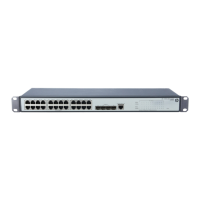
